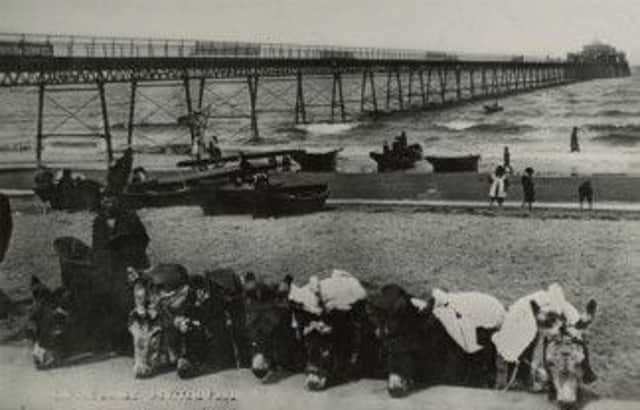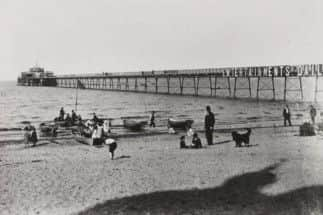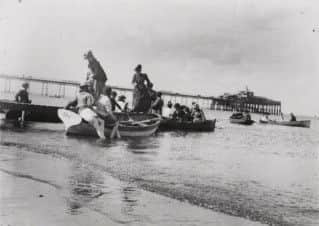Lost Edinburgh: Portobello Pier


Pleasure piers were once a common feature of many seaside towns across Britain. Although pleasure piers were predominantly located in England and Wales, they could also be found along the coastlines of Scotland, including around Edinburgh. Built in 1821, the striking Trinity Chain Pier, was one of the first piers in the UK. Sadly, by the 1850s the neglected structure was being described as ‘deserted and ruinous’. Extensive storm damage forced its removal by the end of the century. Further to the east, Leith harbour boasted two piers, primarily used for the boarding of small steamer ships.
Rising popularity of Portobello
Portobello, a separate burgh from Edinburgh until 1896, had been a popular summer retreat for Edinburgh’s upper classes since the late 18th century. Visitor numbers to its mile-long golden sands, newly-built promenade and growing array of amusements began to rise substantially by the middle of the 1860s. The addition of a grand pier was considered essential if it was to live up to its desired billing as the ‘Brighton of the north’.


Portobello Pier bill
Advertisement
Hide AdIn February 1869 the Portobello Pier bill (along with the new Edinburgh Royal Infirmary bill) was first discussed in Parliament. Portobello locals fully supported the proposal but were keen to insert a clause that would limit the number of excursionists arriving by pleasure boats on a Sunday. The bill was passed within a matter of months.
Opening of the pier
Construction on the pier and its pavilion were completed in 1871 at a cost of £10,000. The opening ceremony on 23 May was performed by Lord Provost Wood and was witnessed by a ‘great assembly’ of spectators. It was claimed at the time that Portobello Pier was by far the finest in the land.


Stretching out 1,250 feet into the Forth, Portobello Pier proved to be an extraordinarily popular attraction and few people ‘grudged the nominal toll exacted for the pleasure of the bracing walk’.
Attractions on the pier included ‘a well conducted tea room and restaurant; a small camera obscura providing views of the sands, sea and coastline; and a concert hall at the far end which was not well patronised in cold or wet weather’. Boat trips to destinations such as Elie, North Berwick, the Bass Rock and the Isle of May departed from the end of the pier during the summer.
The architect
Portobello Pier was designed by Sir Thomas Bouch who had built up a highly-polished reputation among his peers due to his involvement in a number of major civil engineering projects across the United Kingdom. However, his enviable status was to dissolve entirely by December 1879 in horrific fashion. The collapse during high winds of Bouch’s Tay Rail Bridge (for which he had been knighted for) claimed the lives of all 75 passengers aboard the train crossing at the time. Bouch was blamed entirely for the disaster. He died a disgraced man just 18 months later.
Demise of Portobello Pier
Much like the Tay Rail Bridge, structural issues were an overriding factor in the demise of Bouch’s Portobello Pier. Considerable repairs were required due to storm damage and the corrosive action of the sea water on the pier’s iron supports. Heavy expenditure ensued, resulting in the liquidation in 1917 of the company who owned the pier. No further money was sourced to fund the necessary maintenance works and the pier was demolished in December of that year.
Attempts to reinstate the pier
Advertisement
Hide AdFond memories of ‘Porty’ Pier’s glory days never deserted those of a certain generation. Attempts were made to build a new pier in the late 1920s, but support for the project never quite got off the ground. The bold proposal was scrapped by 1935 as attentions were focused instead on the construction of Portobello Bathing Pool. The resurrection of the pier was mooted once more in 2005 in an effort to revitalise the beach area, but just as 70 years before, concrete plans failed to materialise.
Portobello Lass
Portobello Pier was immortalised in the opening line of the 1914 record ‘Portobello Lass’ by the world-renowned music hall comedian, and Portobello’s most famous son, the great Sir Harry Lauder.